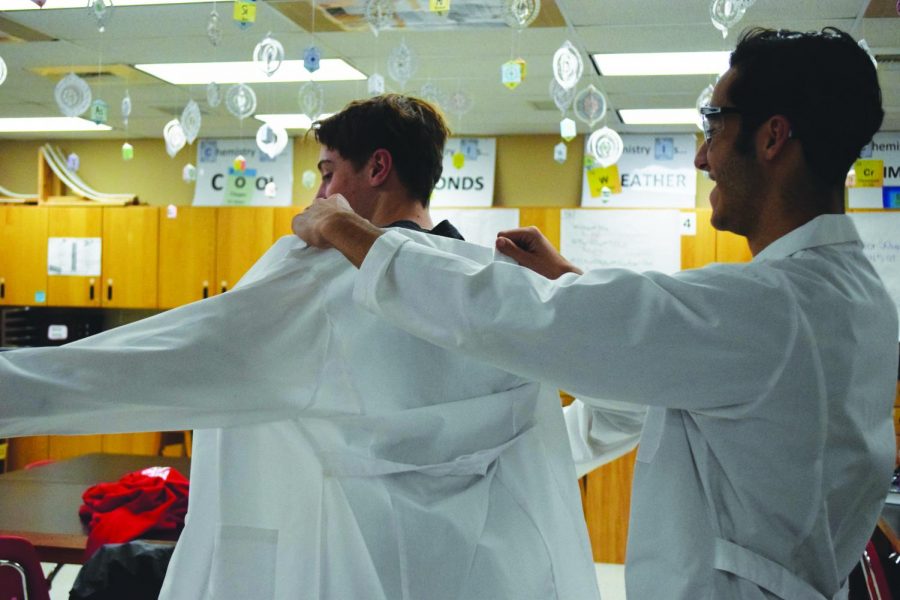AP CHEMISTRY HEATS UP
Chemistry students are making stronger bonds than those of electrons
The debates get pretty intense, there’s yelling across the room,” senior Katherine Kaul noted when asked about one of her favorite aspects about her AP Chemistry class. As a new class to Sandpoint High, AP Chemistry is gaining attention as one of the most unique science classes, as it’s rigorous curriculum deals with the foundation of the universe, while dealing with the explosive tendency of chemicals.
“It’s nice to be around a group of students that all have the same goal, we want to be here to learn more,” senior Kyle Almeida said.
The class, consisting of 14 dedicated students, deals with the complex subject of chemistry, focusing on the atomic level of the universe.
The curriculum deals with six major topics, ranging from the Structure of Matter to Thermodynamics. Since it’s the first time in years that this class is being run, it creates an environment that is open to new ideas and ways to cover the material, in a sense, it has a flexible curriculum than those of other AP classes. As a result, the class, along with Mamie Brubaker, is constantly developing the way the class works.
“Since it’s the first year it’s run, there’s not a sense that we need to do this or that before the test. [The class] is less directed at the test, which is really refreshing,” senior Catherine Brenner said.
As many people know, the class dynamic is imperative to a good school year with peers, and the AP Chemistry class in no exception. Due to the small class, the students in there are very close, engage in colorful class discussions and create an environment where learning is cultivated and appreciated.
“We are definitely much closer, not just because of the fact that we all want learn, but the difficulty of the class makes it so that we either have to stand together or be demolished,” senior Garrett Pierce said.
The great dynamic of the class shows, as the majority stays in class through their lunch so they can solve the last issue or get more help on their homework. Collaboration is a prevalent element in the class, and aids in keeping all the students close, both in the classroom and out.
“It’s a bunch of people who want to work hard and understand the material. It’s a good group to learn with and we all help each other out, which is really nice,” Brenner said.
As a result of the positive dynamic of the class, it creates an environment where questions are student produced and student answered, which creates an element for success. In addition, all the students help each other out, whether it be in study groups or through text messaging.
“Just being able to talk with people who are smarter than I am, I think that’s a really good aspect that I can ask what is going on and they’d be happy to help,” Pierce said.
In addition to weekly study groups or access help, all students spend a substantial amount of time outside of the classroom to prepare for the AP exam this upcoming spring. In fact, students agreed that they spend more time outside of the classroom studying for AP Chem than all their other classes combined.
But in the end, through all the studying and hard quizzes that turn into class debates, most students are content with where the class is heading and how it is helping them prepare for college, with the rigourous curriculum and the amount of independent responsibility it puts on students.
“I would say this would be a good class to take for someone who isn’t even interested in pursuing a STEM degree just because this is as close to a college course as you’re going to get at the high school,” Pierce concluded.

Erin Meek is a senior and it is her second year on staff. She is a lifestyles editor.










